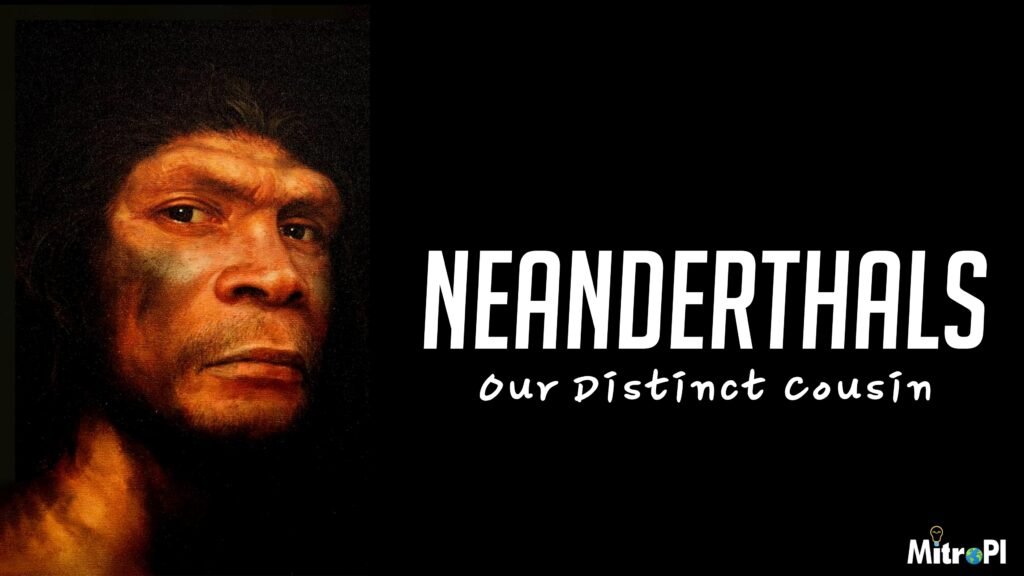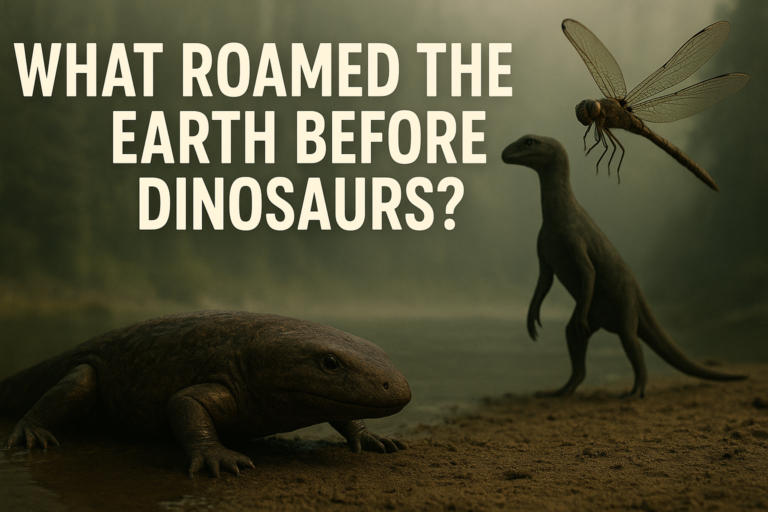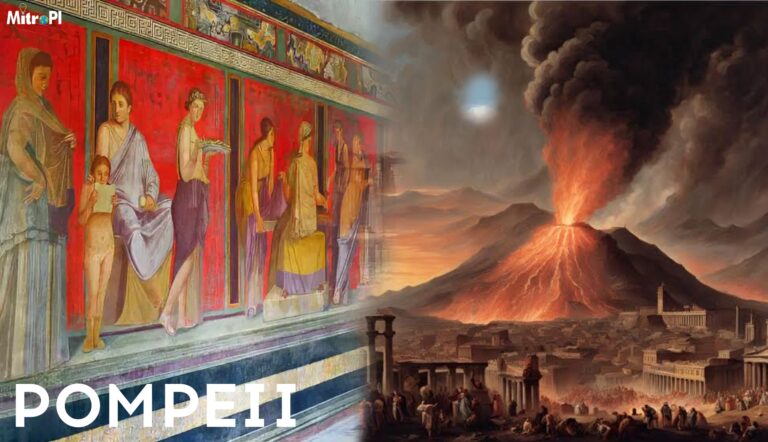Neanderthals our closest ancient relatives, known for their robust build and distinctive facial features. They had a larger brow ridge, a wider nose, and a stockier body compared to modern humans. This sturdiness was likely an adaptation to the cold climates they inhabited.
Neanderthals roamed Europe and parts of Asia approximately 400,000 to 40,000 years ago. Their range extended from the Iberian Peninsula to the Middle East, showcasing their adaptability to different environments over tens of thousands of years.
While Neanderthals shared a common ancestor with modern humans (Homo sapiens), they developed unique traits that set them apart. Their brains were similar in size, and significantly, they had distinct physical adaptations that suited their lifestyles.

The Importance of the Neanderthal Study
Studying Neanderthals helps us piece together the puzzle of human evolution. Their existence sheds light on the adaptive strategies and survival tactics of early hominins.
By examining Neanderthal remains and their artifacts, we can better understand the ecosystems they thrived in, which informs us about climate changes and their impact on biodiversity during prehistoric times.
Discovering how Neanderthals contributed to our genetic makeup reshapes our understanding of modern human diversity, disease susceptibility, and even certain physical traits.
Objectives of the Article
We’ll explore what makes Neanderthals fascinating, their achievements, and how they approached life in a challenging world.
The relationships between Neanderthals and early Homo sapiens were complex, involving both competition and cooperation.
Neanderthals left behind more than bones; their influence extends into our genes and culture, prompting us to re-evaluate their place in human history.
The Neanderthal Lifestyle
A. Habitat and Living Conditions
- Types of dwellings and shelters: Neanderthals were resourceful builders, often creating simple shelters from stone, wood, and animal hides. They also took advantage of natural caves, which provided protection from the elements.
- Regional adaptations to climate: Depending on the location, Neanderthal homes varied significantly. In colder regions, they utilized thicker materials and positioned their shelters to harness warmth from the sun.
- Tools and technology used: Equipped with sophisticated stone tools, Neanderthals crafted hunting instruments and everyday implements, reflecting their skill in adapting to their environment.
B. Social Structures and Community Life
- Group dynamics and family structures: Neanderthal communities likely comprised small family-based groups. This tight-knit structure allowed for cooperation in hunting and gathering, crucial for survival.
- Evidence of cooperation and social bonding: Archaeological findings, such as shared food remnants, suggest they engaged in cooperative hunting, fostering strong social bonds among group members.
- Notions of identity and shared culture: Shared practices and cultures emerged within groups, demonstrating their social complexity. Tools and symbols found in specific locations hint at a sense of identity tied to their communities.
C. Dietary Habits and Foraging Strategies
- Preferred food sources and hunting techniques: Neanderthals were primarily carnivorous, targeting large game such as mammoths and reindeer. They were skilled hunters, using cunning techniques to trap or ambush their prey.
- The role of scavenging vs hunting: While hunting was vital, evidence suggests Neanderthals were also adept scavengers, often taking advantage of kills made by larger predators, indicating their flexible foraging strategies.
- Impact of climate on food availability: Food sources varied significantly with changing climates, compelling Neanderthals to adapt their strategies, such as varying their hunting methods as different animals migrated.
Neanderthal Interactions with Homo sapiens
Neanderthals and modern humans coexisted for thousands of years—evidence suggests they lived alongside each other for at least 5,000 years in some regions.
As Homo sapiens began to spread, the dynamics shifted. Neanderthal populations dwindled due to competition and resource sharing.
Archaeological sites like those in the Levant and southern Europe showcase areas where both species interacted, often sharing or competing for the same resources.
Evidence of Cultural Exchange
The discovery of similar tools suggests that the two groups could have exchanged ideas, leading to advancements in hunting and tool-making techniques.
Some archaeological findings indicate attributes of shared cultural practices, which makes us wonder how interconnected their lives may have been.
Similar burial practices indicate a recognition of life and death, implying that Neanderthals may have held some form of spiritual belief or cultural significance.
Theories of Competition and Cooperation
Competition for food and resources likely increased as populations grew, but there’s evidence of cooperation in some instances, such as shared hunting grounds.
As environments changed, competition intensified, leading to shifts in behavior and survival strategies for both species.
The possibility of alliances raises interesting questions. Did they support each other in tough times? Or was it every group for itself?
Genetic Contributions of Neanderthals to Modern Humans
Modern genetic studies have shown that about 1-2% of the DNA of most non-African populations comes from Neanderthals, evidence of our mingling millions of years ago.
These studies have reshaped our understanding of human history, providing unique insights into the genetic diversity and resilience of modern populations.
Variations in Neanderthal DNA percentages exist across populations, revealing different migration and settlement patterns of early humans.
Some physical characteristics, like certain skin and hair colors, can be traced back to Neanderthal genes, hinting at their ongoing influence on our biology.
Neanderthal DNA also plays a role in susceptibility to modern diseases, demonstrating a complex legacy that carries both benefits and risks.
Some studies speculate that certain cognitive traits, influenced by Neanderthal DNA, may have contributed to adaptive advantages in varying environments.
Advances in sequencing technology allow scientists to delve deeper into ancient genomes, making exciting discoveries about our ancestry.
Ongoing research continues to unearth findings that challenge previous notions, demonstrating how dynamic our understanding of human evolution is.
Despite significant knowledge gained, many questions remain about the full extent of Neanderthal influence. Future research aims to explore these mysteries.
The Cultural and Artistic Contributions of Neanderthals
Neanderthals created various forms of art, from cave paintings to carved figurines, suggesting they engaged in creative expression much earlier than previously thought.
These artifacts reveal a rich cultural life, indicating an ability to think abstractly and communicate ideas.
Comparing Neanderthal art with contemporary human works encourages us to rethink the timeline of creativity and the nature of artistic expression.
Rituals and Spirituality
Neanderthal burial sites often show care and consideration, suggesting they had rituals that honored their dead—a sign of deeper cognitive and emotional capacities.
The presence of burial goods and grave markers indicates that they may have held some beliefs about the afterlife or the spirit world.
Their artistic expressions often reflected a profound connection with their surroundings, hinting at a worldview that extended beyond mere survival.
Reassessment of Neanderthal Intelligence
Recent research suggests that Neanderthals may possess cognitive abilities similar to Homo sapiens, offering new insights into their problem-solving and adaptability.
This calls into question long-held beliefs about intelligence and cultural development, encouraging a more inclusive view of ancient human capabilities.
Understanding Neanderthal contributions to culture prompts reflection on the roots of human creativity and how these ideas evolved over millennia.
Conclusion
Their lives echo through our DNA and culture, reminding us that Neanderthals were not just another prehistoric species, but rather a deeply intertwined part of our story. Their journey is a narrative of resilience, intelligence, and adaptation that continues to captivate our imagination today. As we delve further into this remarkable legacy, we uncover not only the secrets of our ancient cousins but also what it means to be human.
FAQs
A. What were Neanderthals known for?
Neanderthals were known for their robust physical traits, tool use, and cultural practices, including art and burial rituals.
B. How did Neanderthals differ from modern humans?
Neanderthals had a stockier build and distinct facial features, adapting them to colder environments, while also exhibiting different social and cultural behaviors.
C. What do we know about Neanderthal diet and lifestyle?
They were primarily carnivorous, skilled hunters and gatherers, living in small communities and utilizing tools for survival.
D. How much Neanderthal DNA do modern humans carry?
Most non-African populations carry about 1-2% Neanderthal DNA due to interbreeding that occurred tens of thousands of years ago.
E. What contributions to culture and society did Neanderthals make?
Neanderthals contributed to our cultural heritage through art, burial rituals, and possibly through shared knowledge and practices with early modern humans.
F. Why are Neanderthals important in studying human evolution?
They provide critical insights into human evolution, adaptation, and the interconnections within the hominin family tree, enriching our understanding of human history.





Just wish to say your article is as surprising The clearness in your post is just cool and i could assume youre an expert on this subject Fine with your permission allow me to grab your RSS feed to keep updated with forthcoming post Thanks a million and please keep up the enjoyable work